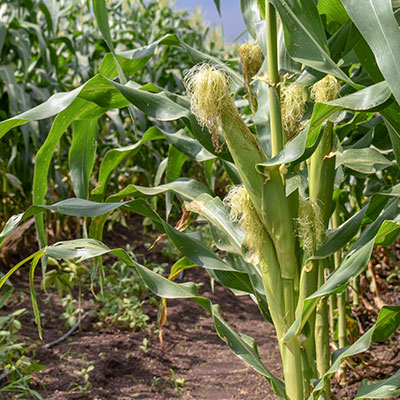Brazilian crops safe from La Nina effect: analyst

La Nina led to a disastrous Brazilian corn crop this year but that won’t be the case in 2022, says an analyst.
The U.S. National Oceanic and Atmospheric Administration says La Nina conditions have developed and there is an 87 percent chance they will remain in place in the December 2021 through February 2022 period.
It will be the second year in a row that the yield-sapping weather event has been in place during South America’s summer growing season.
Last year it led to extreme dryness in Brazil that delayed soybean planting, which in turn pushed back the second crop of corn planted on soybean stubble.
The delay made the safrinha corn crop vulnerable to drought and frost, which both took a toll.
“Everything that could go wrong did go wrong and it resulted in a terrible crop, an absolute catastrophe,” said Michael Cordonnier, analyst with the Soybean & Corn Advisor.
Growers harvested 86 million tonnes of corn, a 15 percent drop from the previous year.
But this year’s La Nina growing season is starting out completely different. Rainfall has been plentiful in Brazil and growers are planting the soybean crop at the second fastest pace on record.
“This La Nina hits weird,” he said, adding that it’s odd that the soybean crop is off to such a fantastic start and looks better than average so far.
It appears the safrinha corn crop will be planted on time, which for the key production state of Mato Grosso means completion by the third week of February.
At this point the only thing likely to cause a seeding delay is a very wet January and February, which would push back the soybean harvest. That is unlikely given the presence of La Nina.
Forecasters in Brazil predict it will be dry during in the November through January period. That could hurt soybean yields because that is the pod-filling stage.
But the corn crop should go in the ground on time, which is why Cordonnier and the U.S.
Department of Agriculture both forecast 118 million tonnes of production, a 37 percent increase over last year.
Brazil is the world’s second largest corn exporter behind the U.S., so the country has a sizeable impact on world corn prices, which in turn influence world wheat and barley prices.
Argentina is the world’s third largest corn exporter.
Cordonnier said that country is experiencing much more typical La Nina-type weather to start the growing season.
Argentina’s corn crop was 27 percent planted as of late October compared to the usual 33 percent.
Growers usually take a break from seeding in November and resume in December. If conditions haven’t improved by then Cordonnier believes there will be an acreage shift away from corn and into soybeans.
He thinks there could also be some lower-than-normal corn yields for both Argentina and Brazil if farmers scrimp on fertilizer applications due to high prices and reduced availability of the crop input.
The president of the Soybean & Corn Producers Association of Mato Grosso is advising growers in his state to cut back on fertilizer if possible to keep a lid on costs.
However, Mosaic’s vice-president in Brazil said there will be no shortage of fertilizer in the country. He is forecasting a record 45 million tonnes of fertilizer imports for the upcoming season, said Cordonnier.
Read also
Trump announces new tariff ultimatums for Mexico and the EU
Oilseed Season 2025/26: Déjà Vu or New Chapter?
Nigeria, Brazil sign $1 billion deal to boost agriculture, energy
Corn exports from Ukraine in MY 2025/26 will increase by 3 mln tons
Feed wheat supplies are disappearing from the Black Sea markets, demand prices hav...
Write to us
Our manager will contact you soon



